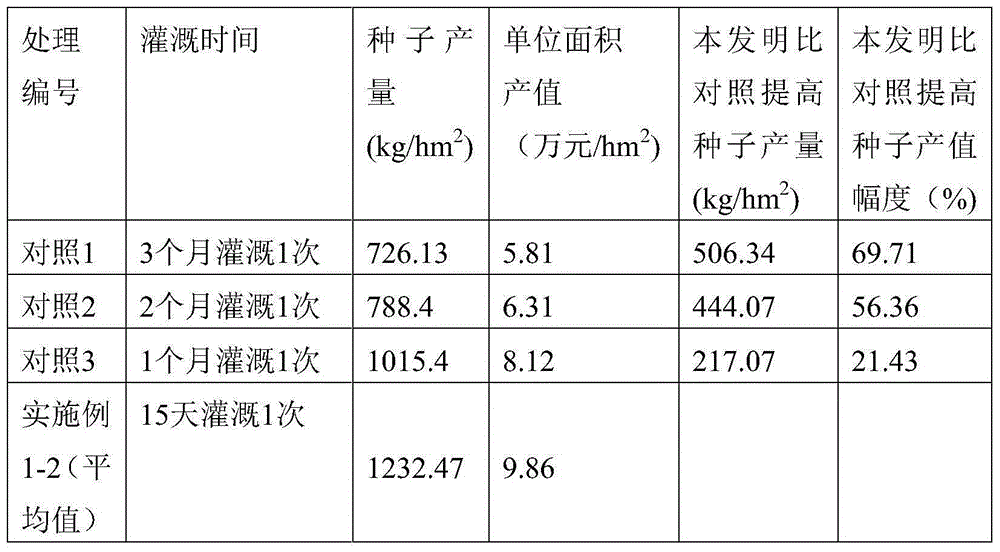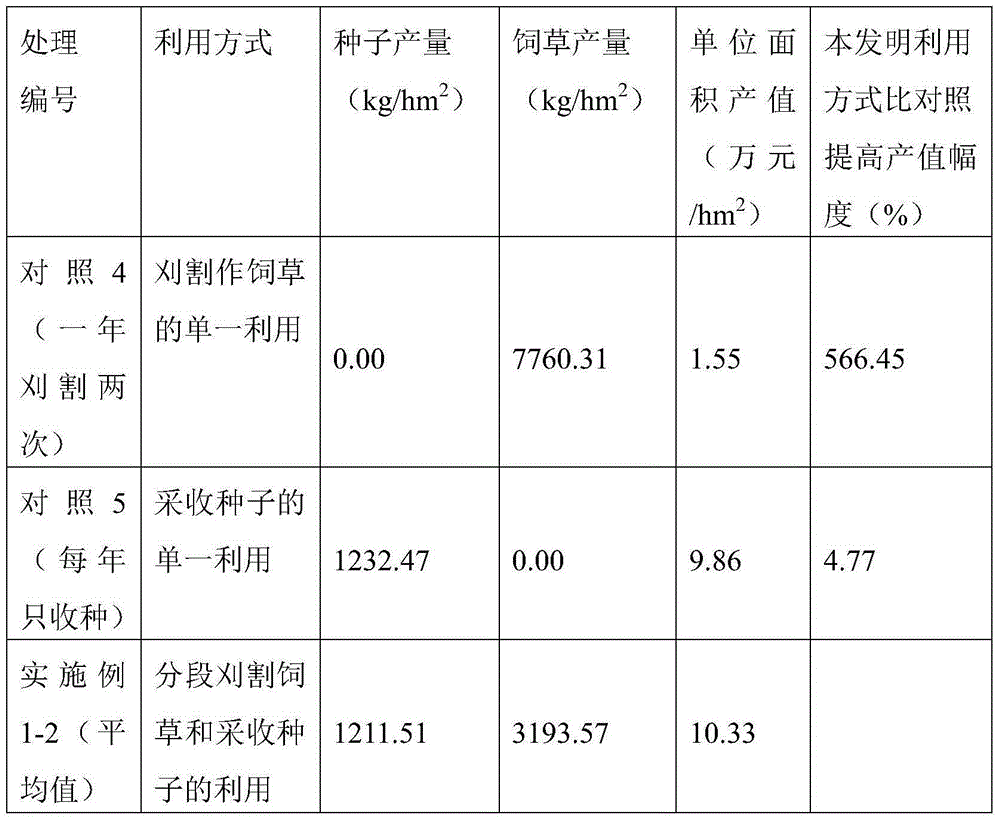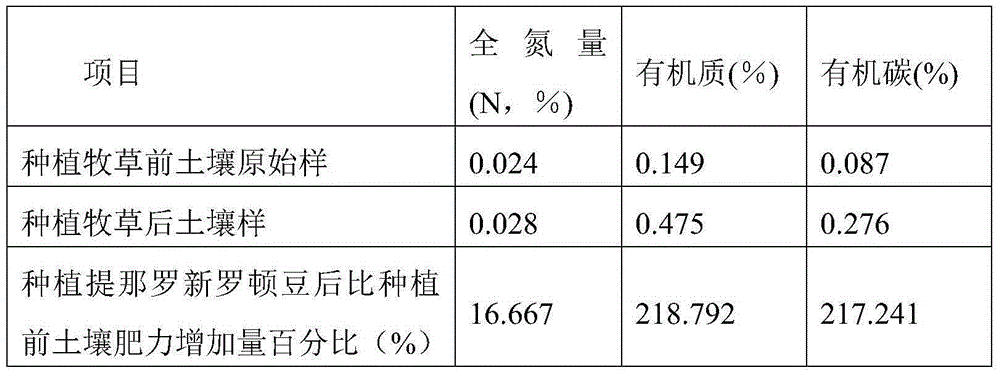Cultivation and Utilization Method of Segmental Cutting and Harvesting Seeds of Tinara New Roton Beans
A technology of rotten beans and seeds, which is applied in the field of segmental cutting and seed collection and utilization of new rotton beans in Tinara, can solve the problems of low economic benefit, low yield of forage grass, and no scientific and reasonable cultivation and management of forage grass, so as to promote The effect of fullness
- Summary
- Abstract
- Description
- Claims
- Application Information
AI Technical Summary
Problems solved by technology
Method used
Image
Examples
Embodiment 1
[0025] A method for cultivation and utilization of tinara new rotten bean segmented cutting and harvesting of seeds provided by the present invention includes selection of planting and utilization areas, seedling raising, cultivation management and utilization of planting and planting year, the first step Two years later, the cultivation management and utilization of Tinalo new rotten beans segmented cutting and harvested seeds, the specific measures for each step are as follows:
[0026] (1) Selection of planting and utilization areas: Select the degraded mountains of the Jinsha River dry-hot valley for seedling raising, planting and utilization.
[0027] (2) Raising seedlings: Raising seedlings in May. Before raising seedlings, soak the seeds of Tinara new Roton bean in 80°C water for 3 minutes. After draining the water, use dry soil with a sieve with an aperture of 3 mm to mix with Tenaro New Roton. The bean seeds are mixed, and when mixing, the volume ratio of the dry soil...
Embodiment 2
[0037] Except that the following steps are different in Embodiment 2, other operations are the same as those in Embodiment 1, and are not repeated here.
[0038] The difference is that in (3) ②B. the year after planting, the utilization method of tinara new rotten beans is adopted as the method of seed utilization. Roton bean grows to the second year from January to February, and the seeds are harvested in 4-5 batches (due to the inconsistent maturation of Tina Roton beans, they mature gradually during January to February each year. When harvesting, you should see Seeds can be harvested when the seed pods appear brown, generally 4-5 batches of seeds can be harvested. During this period, the seeds collected in each batch are harvested at one time), and in the dry season of the planting year to the appearance of the seed pods, 1 Water once a month to make the soil water content not less than 3% by the next watering. When the seed pods appear and before the seeds are harvested, w...
PUM
 Login to View More
Login to View More Abstract
Description
Claims
Application Information
 Login to View More
Login to View More - R&D
- Intellectual Property
- Life Sciences
- Materials
- Tech Scout
- Unparalleled Data Quality
- Higher Quality Content
- 60% Fewer Hallucinations
Browse by: Latest US Patents, China's latest patents, Technical Efficacy Thesaurus, Application Domain, Technology Topic, Popular Technical Reports.
© 2025 PatSnap. All rights reserved.Legal|Privacy policy|Modern Slavery Act Transparency Statement|Sitemap|About US| Contact US: help@patsnap.com



